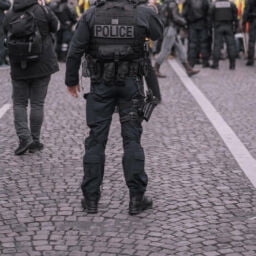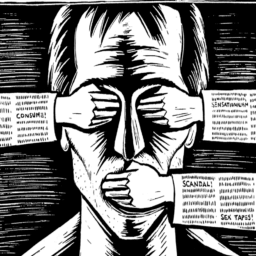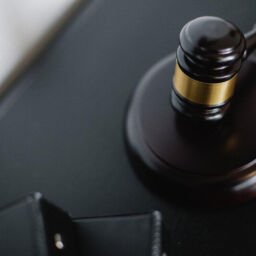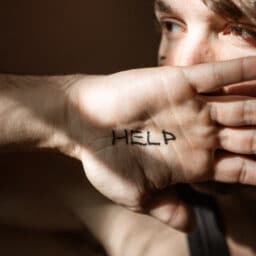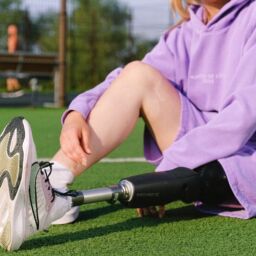BACKGROUND
Amnesty international defines police brutality as “various human rights violations by the police, including beatings, racial abuse, unlawful killings, torture, or indiscriminate use of riot control agents at protests. Police brutality violates the right to be free from discrimination, the right to liberty and security, and the right to equal protection under the law. There are strict standards limiting the amount of force the police can use- especially lethal force. One of these is the United Nations Basic Principles on the Use of Force and Firearms by Law Enforcement Officers (BPUFF)[1], which states that it is the responsibility of the state authorities, including the police, to respect and protect the right to life.
International law emphasizes the right to use lethal force only as a last resort, when all other options for de-escalation of the situation have been exhausted and the use of force is necessary to protect themselves or others from urgent threats of death or serious injury. Only in these situations is the use of lethal force justified. Many a times however, this is not the case. Many trigger-happy cops on power trips are more than happy to shoot first, ask later. Often many countries have no national laws to restrict the use of force by the police.
In many countries, a combination of factors like inadequate laws, racial discrimination, insecurity, etc. cause higher rates of police killings. Governments that stamp on human rights like the freedom of expression and peaceful assembly do not help matters. Since many cases of police killings are never investigated, the police are unaccountable for their actions and never suffer any consequences.
POLICE BRUTALITY IN INDIA
In India, despite the lockdown the previous year, there was an increase in custodial deaths and suicides because of alleged torture by the police. According to the India: Annual Report on Torture 2020 by the United Nations Campaign Against Torture (UNCAT), though crimes fell by more than 50 per cent, there was an increase in deaths by police custody. While the National Human Rights Commission registered 90 deaths in police custody, the National Campaign Against Torture (NCAT), recorded 111 deaths in police custody across the nation.[2] The report further implied at the unfortunate association between custodial deaths and suicides.
“Often victims are tortured to death and police claim that the victims have committed suicide with unimaginable objects such as shoe laces or chord of underwear. However, in a number of cases either being unable to bear further torture or to escape from humiliation including in front of the family members, victims commit suicide. After release from police custody, victims committed suicide for being tortured and humiliated in front of family members including beating of the husband in front of his wife, torture and humiliation in front of parents, mental torture, harassment etc. In 2020, the NCAT recorded 55 deaths by suicide as a result of police torture i.e. more than one suicide every week as a result of police torture”[3].
It would be foolish to speak of custodial deaths without mentioning the deaths of shopkeeper Jeyaraj and his son Beniks, who were accused of violating covid norms, and later arrested. They were kept overnight in jail, taken to a hospital, and died from several internal injuries several days later[4]. Torture of women in police custody was reported and the worst from of torture: custodial rape of women by law enforcement officers was seen[5].The report also found a number of cases of torture of Scheduled Castes (Dalits) and Schedule Tribes (tribal people) in police custody[6].
This is not the only crime committed by the police. Recently the Kerala High Court cracked down on the Police force for “ continuously disrespecting citizens and for utterly disregarding its earlier directions to stop using derogatory terms while addressing citizens”. It condemned the attitude of the police force which was described as “colonial” and “stubborn”[7]. Despite a previous order by the court to prohibit the use of the vernacular terms like ‘eda’, the police continued to use the derogatory term. The court remarked that the police still did not know how to use civilised language. A doctor stopped by the police and verbally abused had filed a case before the court. The court while reading the report by the Assistant Commissioner of Police once more remarked: “Pertinently, the Assistant Commissioner of Police finds that there are no “serious lapses” on the part of the fifth respondent but it does not explain how he has concluded so.” We can see here the respect the police force has for the honourable high court.
BEACONS OF HOPE?
India is sadly among one of the five countries to not have ratified the UNCAT. This is because one of the prerequisites to get ratification includes the presence of a domestic anti-torture law, something India lacks. India drafted an anti-torture law way back in 2010, yet despite repeated attempts has been unable to pass it by the parliament. According to some officers who spoke to CNN[8], an increase in funding the police force might reduce incidents of custodial violence. During the financial year 2018-19, a mere 1.3 per cent of the country’s $18.9 billon budget was spent on training personnel and about 1.8 per cent on modernization like providing new equipment and forensic labs.
Recently, the apex court of the nation gave two important verdicts to significantly reduce torture. The first judgement was in Tofan Singh vs. State of Tamil Nadu[9], where it was held that confessions made to officers under the Narcotic Drugs and Psychotropic Substances Act would be inadmissible as evidence in the court. The oather judgement which could significantly decrease torture was in the case of Paramvir Singh Saini vs Baljit Singh[10], where the court ordered the installation of CCTV cameras with night vision facilities in every police station and all interrogation facilities of central probing agencies. Some suggestions offered are:
- The power of the police to use lethal force must be controlled by law.
- Whenever use of force results in death or injury, there must be a prompt, impartial investigation and those responsible must face justice.
- It must be noted that those who are in jail have the same constitutional rights as everyone else as was held by the Supreme Court in the case of State of Andhra Pradesh vs Challa Ramkrishna Reddy[11].
Author(s) Name: Shradha Ahuja (Himachal Pradesh National Law University, Shimla)
References:
[1] https://www.ohchr.org/EN/ProfessionalInterest/Pages/UseOfForceAndFirearms.aspx
[2] National Campaign Against Torture, India: Annual Report on Torture-2020 Pg 11, Para 1 http://www.uncat.org/wp-content/uploads/2021/03/IndiaTortureReport2020.pdf
[3] National Campaign Against Torture, India: Annual Report on Torture-2020 Pg 51, Paras 2-3 http://www.uncat.org/wp-content/uploads/2021/03/IndiaTortureReport2020.pdf
[4] Jeffery Gettleman & Sameer Yasir, ‘Hundreds of mass killings in India, but no mass protests’ (The New York Times, 20th August 2020) < https://www.nytimes.com/2020/08/20/world/asia/india-police-brutality.html> Accessed 22nd September 2021
[5] National Campaign Against Torture, India: Annual Report on Torture-2020 Pg 74, Para 1 http://www.uncat.org/wp-content/uploads/2021/03/IndiaTortureReport2020.pdf
[6] ational Campaign Against Torture, India: Annual Report on Torture-2020 Pg 69, Para 2 http://www.uncat.org/wp-content/uploads/2021/03/IndiaTortureReport2020.pdf
[7] Hannah M Verghese, ‘Kerala High Court comes down on Police Force once again, condemns its continued practice of Colonial attitude’ (Live Law, 22nd September 2021) < https://livelaw.in/news-updates/kerala-high-court-comes-down-on-police-condemns-continued-practice-of-colonial-attitude-182211> Accessed 22nd September 2021
[8] Mohit Rao, ‘Indian Police use violence as a shortcut to justice. It’s the poorest who bear the scars’ (CNN) < https://edition.cnn.com/2020/12/02/india/police-brutality-india-dst-intl-hnk/index.html> Accessed 23rd September 2021
[9] Tofan Singh vs. State of Tamil Nadu [2020] 16 SCC 31
[10] Paramvir Singh Saini v. Balijit Singh [2020] 7 SCC 397
[11] State of A.P. v. Challa Ramkrishna Reddy [2000] 5 SCC 712


